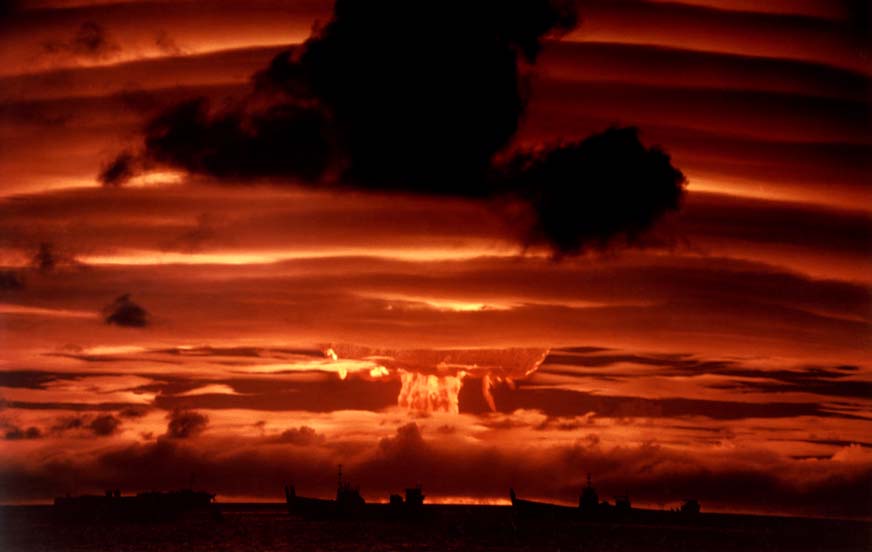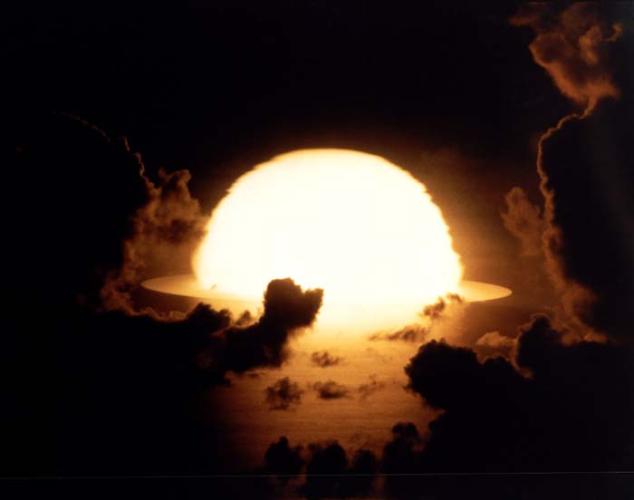
Michael Light – 100 Suns
100 SUNS is an installation of 100 photographs drawn by Michael Light from the U.S. National Archives and the Los Alamos National Laboratory which document the era of American atmospheric nuclear testing. The tests were either conducted in Nevada or the Pacific and the exhibition includes previously classified material from the clandestine Lookout Mountain Air Force Station based in Hollywood, whose film directors, cameramen, and still photographers were sworn to secrecy. Between July 1945 and November 1962 the United States is known to have conducted 216 atmospheric and underwater nuclear tests. After the Limited Test Ban Treaty was signed between the U.S. and the Soviet Union in 1963, nuclear testing went underground. It became literally invisible but more frequent: the United States conducted a further 723 underground tests until 1992.
The title 100 SUNS references J. Robert Oppenheimer's response to the world's first nuclear explosion in New Mexico when he quoted a passage from the Bhagavad Gita, the classic Vedic text: "If the radiance of a thousand suns were to burst forth at once in the sky, that would be like the splendor of the Mighty One... I am become Death, the destroyer of worlds." This was Oppenheimer's attempt to describe the otherwise indescribable.
100 SUNS likewise confronts the indescribable by presenting without embellishment the stark evidence of the tests at the moment of detonation. Each photograph - altered in size but not in content - is presented with the name of the test, its explosive yield in kilotons or megatons, the date and the location. Interspersed within the sequence of explosions are images of awestruck witnesses, often in lethal proximity to the blasts.A book designed by Michael Light, 100 SUNS, was published in six editions in five different languages in October 2003 and forms a striking sequel to his 1999 book and exhibition FULL MOON, the first comprehensive archive project on which he worked, which used NASA Apollo photographs to reexamine the manned lunar explorations and the world they visited in terms of landscape representation and the sublime. FULL MOON was published and exhibited internationally and the exhibition has since been acquired for permanent display at the American Museum of Natural History in Manhattan.Michael Light is currently photographing both urban and geological areas of the American West from small rented airplanes, pursuing themes of mapping, vertigo, and human impact on the land. He continues to make handmade, large-scale book objects of his work, and a published trade edition of aerial work is forthcoming.Michael Light has exhibited nationally and internationally, and his work is in the permanent collections of the San Francisco Museum of Modern Art, The Getty Research Library, The Los Angeles County Museum of Art, The New York Public Library, the Victoria & Albert Museum in London, The Center for Creative Photography, and The Museum of Photographic Arts, among others. Light is represented by Hosfelt Gallery, San Francisco and Frehrking Wiesehöfer Gallery, Cologne.
